As the program co-chair for RBMS 2026, I wanted a place to be able to compile examples of advocacy in libraries and archives as we prepare for the conference June 23-26, 2026 at the Hyatt Regency in Milwaukee, WI. The theme is Advocacy: Finding Your Voice.All original content copyright Colleen Theisen unless otherwise expressed. Views expressed in this blog are my personal work and do not direcly represent my employer, RBMS, ACRL, or the ALA. Please reach out via the "ask" feature if you have any questions or if you feel that any content has been shared erroneously.
Don't wanna be here? Send us removal request.
Text
Special Collections have a unique need for blogs, moreso than other kinds of libraries. Regular social media sites like Instagram and Twitter don't have the space to share the research, history, and context that unique historic materials require, and that our staff are uniquely situated to investigate and share.
I appreciate a good post with context!
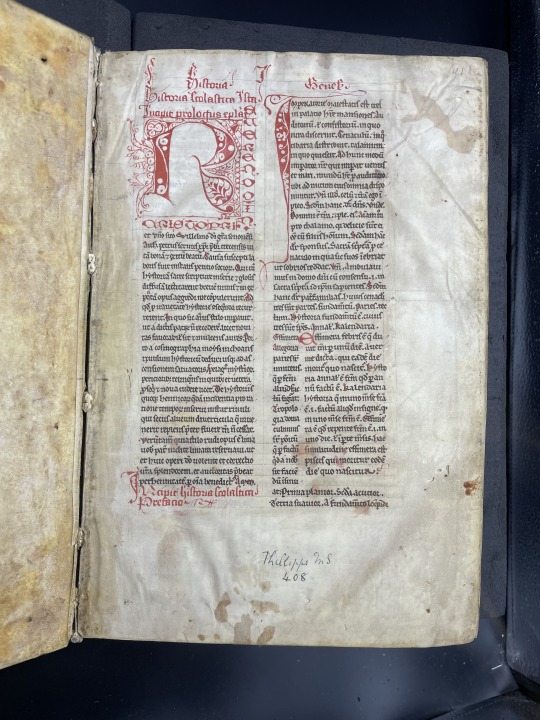

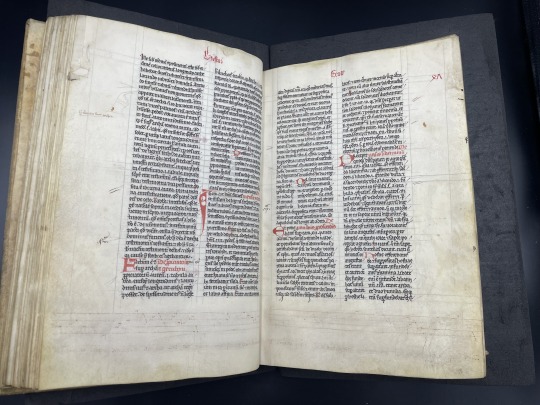

Natalie Nitsch, a newly minted graduate of the Divinity School's MA program, has been a Rare Books Assistant for the past year. In honor of her last day, she wrote about one of her favorites from our collections: MS 120, a 13th-century manuscript containing Petrus Comestor's Historia Scholastica (and plenty of evidence of use by centuries of former owners). Congratulations, Natalie!
-----
Many scholars of medieval manuscripts are drawn to their field because of the ability of old books to, as it were, make eye contact with a person from across the centuries. Of course, manuscripts are neither animate (though I wonder about the life of the deer and livestock who gave up their skins for their binding and pages, and the wasp larvae that once inhabited the oak galls used in ink) nor conscious (though I always say goodbye to a manuscript when I reshelve it for the last time). Nevertheless they reward careful looking uncannily well, in a way that I have come to conceive of as meeting and holding the gaze of modern viewers. Of the materials I have written descriptions of over the past year of my employment---130 codex manuscripts and the hundred-odd piece Wandel Collection of Manuscript Fragment---UC’s MS 120 held my gaze the longest and looked back the hardest.
By way of its less recent history, MS 120 was written in the 12th or early 13th century in Germany. It contains an imperfect copy of the 12th-century Historia Scholastica by Petrus Comestor (whose name, delightfully, translates to Peter the Eater), a Biblical paraphrase that enjoyed huge popularity in the medieval period. MS 120 resided at either the Benedictine priory of St. Jakobsberg near Mainz or the Premonstratensian monastery at Steinfeld, both in modern-day Germany, until the desecularization of many German religious houses in the early 19th century. It was then acquired by the 18th-century German theologian Leander van Ess, and subsequently owned by the famed English book collector and ‘vellomaniac’ Thomas Phillipps, Baronet, in 1824. After the dispersal of Phillipps’ collection, it made its way to Ricketts.
By way of its recent history, MS 120 was given to the University of Chicago just before Christmas in 1924 by Coella Lindsay Ricketts (almost as delightful a name as Peter the Eater), a self-described “scribe, illuminator, and binder” who, among other occupations, produced the parchment diplomas issued by the U of C for the first several decades of its existence. MS 120 apparently looked back at Ricketts, just as it looked back at me: in Ricketts’ presentation letter to then-University president Ernest D. Burton, he writes, “Here is an old manuscript on vellum that has been knocking around this world for seven hundred years or more, and thinking that is long enough, I want it to find a permanent home where it will be welcome and appreciated and enjoy companionship.” I imagine he said a fond goodbye to MS 120 before sending it across the city, presumably by courier.
The reason MS 120 held my eye for so long is not necessarily its copious annotations, though it does appear to have been continuously annotated by monks from its creation to the 18th century, when it was acquired by Ess. (Frankly, copious annotations are cool, but a bit of a pain for a person writing a description of a manuscript. They are 1. not often written legibly and 2. not usually particularly revealing.) Its erased 13th century musical notation on four-line staves (ff. 46r-47r, f. 106r) is similarly eye-catching, but must be left for some future researcher to decipher; they are illegible even using the usual imaging methods that help scholars to read faint text. Two relatively minor and unimportant details were, instead, what stared me down.
First, there is a drawing of a woman on the right margin of f. 44r. It was done with a sharp instrument that had no pigmentation, so it is nearly impossible to see unless you hold the parchment at the right angle---imagine the impressions that are left on the next page of a notepad if you press hard with your pencil. (These kinds of annotations, not uncommon in parchment manuscripts, are often called “scratch” or “fingernail” glosses, because they can also be done with a fingernail.) The woman doesn’t seem to have anything in particular to do with the text that accompanies her, a commentary on the First Commandment, “you shall have no other gods before me”. It’s impossible to know which German monk drew her, or why, or who she is intended to represent; she has no identifiable attributes, and the art quality is not that of a master (her eyes bulge). She is fascinating to me mainly because of her invisibility and anonymity. I flipped past this page several times without noticing her, and the fact that I did eventually---I believe I selected the text on this page to check against an edition of the Historia Scholastica totally by chance---felt like MS 120 rewarding me for my diligence. I wondered how many of MS 120’s former owners had noticed this woman, and whether they had any more of an idea than I did about what she was doing there.
The second detail is even less arresting than a marginal drawing, but felt even more like a direct intervention from MS 120. A previous library assistant had noted that a break in the text at one spot in the manuscript, between the pages labelled f. 121 and f. 122---essentially, that some text was missing. After some comparison with an online edition of the Historia Scholastica, I discovered that there was, indeed, about a page’s worth of text missing. I recorded it in my very-21st century description (in an Excel spreadsheet, in accordance with modern descriptive cataloging standards) in the following terms: “Text is complete except for the contents of one folio following f. 121. Text ends at Migne P.L. Vol 198 col. 1366D ‘qua terminata iterum dedica[tione]’ and picks back up at 1369C ‘[sacrifi]cia et frequenta’.” Giving the page a final once-over, I noticed a small note at the bottom of the page (f. 121v), in a medieval hand: “Hic deficit 1 folio”, or, “Here, one page is missing.” Someone who lived at least a half a millennium ago had noted concisely and exactly what I needed to know, not knowing that the simple fact of a missing page would ever need to be recorded in such detail as I recorded it, nor that anyone would need to fiddle around with a digital edition of the text to figure out how much text the manuscript was missing. It was as simple as “here, one page is missing”, all along.
Medieval manuscripts, perhaps more than any other artifact of the past, are indelibly, undeniably human. That should be enough to hold our attention, and our collective gazes.
-----
82 notes
·
View notes
Text
I don't think people realize how much special collections and archives, as the stewards of unique materials, work with cultural heritage institutions around the world to loan materials for exhibitions. It takes a lot of logistics, a lot of meetings, and a not insignificant amount of money to make that happen, but it's always amazing when the perfect collaboration comes together and a historic object can be seen by a new community in a new context.



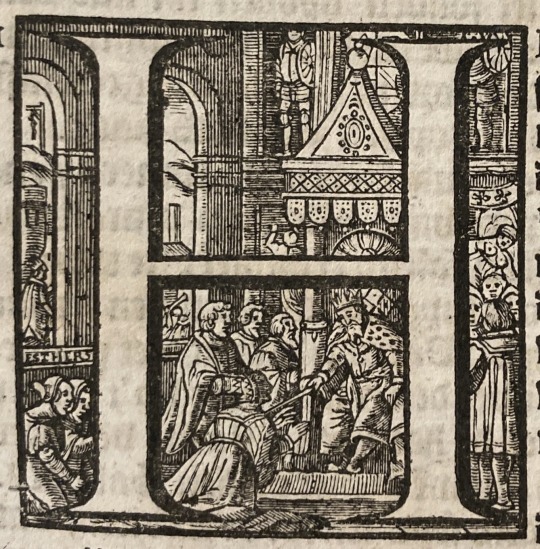
H is for HDS Library Book on Display in New York!
We are honored to have one of our rare books displayed as part of an exhibit titled, "The Book of Esther in the Age of Rembrandt" at the Jewish Museum of New York until August 10, 2025!
In the age of Rembrandt van Rijn (1606 – 1669), the biblical Book of Esther was a key source of inspiration for diverse communities in Holland, both Jewish and Christian. Traditionally, the Esther story is read annually on the Jewish holiday of Purim. For immigrant Jewish communities living with new freedom in more tolerant Amsterdam, celebrating Purim—notably through finely produced Esther scrolls and theater productions—became meaningful expressions of Jewish culture. For the Dutch, Queen Esther’s heroism came to represent their emerging nation’s identity. Rembrandt and his contemporaries depicted essential scenes of Esther’s story in paintings, prints, drawings, and decorative arts. This exhibition gives expression to this full range of the Book of Esther’s popularity and meaning in Rembrandt’s time.
The HDS Library contribution is a Dutch bible from 1649 that includes a lovely initial H illustrated with a scene of Esther before the king.
More info about the exhibit is here.
Photo credit (images 1 & 2): Installation view of "The Book of Esther in the Age of Rembrandt," at the Jewish Museum, NY, March 7–August 10, 2025. Photo by Kris Graves.
Biblia, dat is, de gantsche H. Schrifture, vervattende alle de Canonijcke Boecken des Ouden en des Nieuwen Testaments... In 's Graven-hage: Bij de Weduwe ende Erfgenamen van wijlẽ Hillebrant Iacobsz. van Wouw, ordris Druckers vande Hoogh-Mog. Heeren Staten Generael, [1649].
212 notes
·
View notes
Text
The Sacramento History Museum started posting to Tiktok in 2020 and quickly went viral, helped along by the incomparable Howard who volunteers as a printer.
Now, they have a chance to reach a community of far beyond a million followers across platforms. For myself, I prefer how the videos embed here on Tumblr, since you can include the full explanation, context, and citations that ensure a great educational opportunity alongside the video.
Here's the merch, by the way.

We are building up a variety of letterpress greeting cards and this card is beary special!The text on the card is typeset in 36 point Cheltenham Bold Condensed font and it says “You’re beary special!”
The electrotype of the bear was made roughly 80-90 years ago and it is from the Bill Gaylord Collection. The back of the card includes an image of a Washington hand press and the words “Printed at the Sacramento History Museum.” This was letterpress printed with a mix of green, reflex blue, and opaque white rubber base ink using a 3x5 Kelsey Excelsior tabletop printing press. This card and other cards are available in our Museum Store.
365 notes
·
View notes
Text
The book model collection is an incredible example of the kind of collaboration that can happen for everyone's benefit when a special collections is in a university setting. A student in the UI Center for the book creates a model that is included in the Binding Model Collection, housed in the UI Libraries' Conservation Lab, and available to be used as reference by conservation staff, for classes by special collections librarians, and as reference for UI Center for the Book students!
instagram
10 notes
·
View notes
Text
Here's a great feature about the archives at the Miller brewing company's archives in Milwaukee, WI and features archivist Dan Scholzen.
0 notes
Text
Great example demonstrating the behind the scenes work at academic libraries to digitize and share the collections. Tiktok has great built-in tools for filming and editing video, and then it's easy to share them elsewhere (like on Tumblr).
We’re giving this book a digital glow-up one scan at a time.📖✨
No smudges, no dog-ears—just flipping amazing results. 😎📚💻
122 notes
·
View notes
Text
Be sure to follow @uwmspeccoll as we prepare for RBMS 2026 in Milwaukee!







A Lapwing Feathursday
The Northern Lapwing (Vanellus vanellus) is a wading bird in the family Charadriidae, which includes lapwings, plovers, and dotterels. It is a resident of Great Britain where the noted British naturalist artist and illustrator Charles Tunnicliffe (1901-1979) observed these birds and depicted them in his chapter on "Plumage Study" in Bird Portraiture (“How To Do It” Series No. 35), published in London and New York by The Studio in 1945. Tunnicliffe writes:
I think you will agree now that a knowledge of plumage changes is important, for it would never due to put a fine cock Lapwing, in summer plumage, in the middle of a December landscape. Remember that there is always a fierce ornithologist just round the corner, ready to pounce and rend you as soon as you make a "birdy" faux-pas.
Our copy of Bird Portraiture is from the collection of the Library of the Akron Art Institute with its bookplate, and is a gift to UWM Special Collections from our friend Tony Drehfal.

The lesson: don't make "birdy" faux-pas!
View more posts with works by Charles Tunnicliffe.
View more Feathursday posts.
207 notes
·
View notes
Text
Special Collections, Libraries, Archives, (GLAM) Links 7/25/2025 Part 2
Weekly GLAM news roundup. 7/25/2025 Part 2.
#public libraries#special collections#museums#libraries#archivist#archives#academic archives#SpecialCollections#RBMS26#GLAMNews
4 notes
·
View notes
Text
Special Collections, Libraries, Archives, (GLAM) Links 7/25/2025 Part 1
I post library, archives, special collections, museums, and general GLAM news to by BlueSky account each week. I will compile them here once a week.
There seems to be a limit to how many links I can include, so this will be Part 1.
#special collections#public libraries#museums#libraries#archivist#archives#booksellers#donors#academic libraries#GLAMNews#RBMS26
2 notes
·
View notes
Text
"Community"
There didn't seem to already be a community for rare books, special collections, or archives yet. The search function isn't very good, so do let me know if there is one that I'm just not finding.
Otherwise, you can join this one:
0 notes
Text
Here's your chance to tune in and discuss The Voynich Manuscript.
I sidle up to you and wink as I open my trench coat, revealing...
(NO it's not the real one, but it's still cool. And I'm telling you first because it seems like something you'd be into. Yes, you.)
347 notes
·
View notes
Text
Very early in my special collections career as a staff assistant in Special Collections I was tasked with assisting Cathleen with a very large item she was researching. She took time to tell me all about her research and really got me excited about what you can learn from rare books. I hope we can all remember to take the time to tell our story, it really makes an impact.
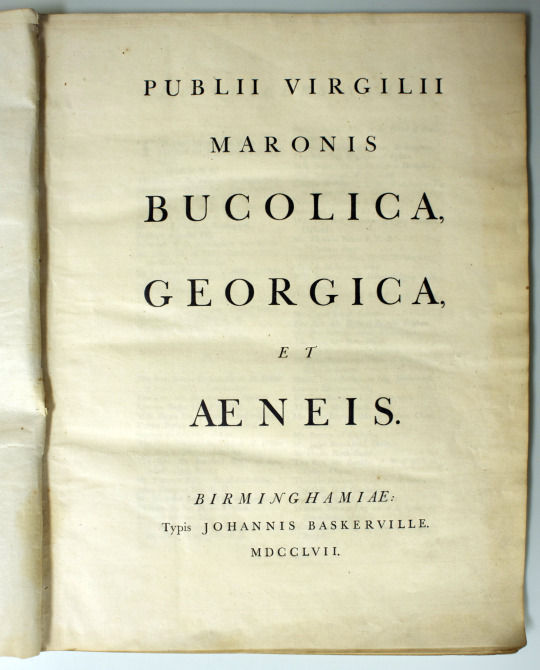
Title page of John Baskerville's Virgil (1757)
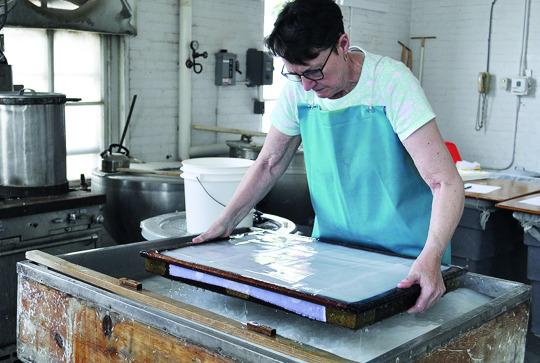
Cathy Baker making paper
In this video, Dr. Cathleen A. Baker (U-M Conservation Librarian Emerita) takes us through her years-long research into the earliest Western-made wove paper, including papermaking experiments to replicate the paper that first appeared in John Baskerville’s Virgil, published in Birmingham, England, in 1757. This paper, which is now the most commonly used type by people all over the world, had its origins in East Asia perhaps as long as a millennium ago, but until the mid-eighteenth century, it was unknown in the West.
View the video of Baker's talk!
31 notes
·
View notes
Text
RBMS 2026 Conference Theme Advocacy: Finding Your Voice
Next year’s RBMS Conference theme is Advocacy: Finding Your Voice, and the conference will take place June 23-26, 2026, at the Hyatt Regency in Milwaukee, Wisconsin.
Here is the longer description:
Special collections and archives are in a time of transition and rethinking, asking questions about who we serve, what we collect, and how we reach our communities and share our story. Change, however, often requires changes in resources, from budget to staffing. How can we bring alignment between our work and the support it needs? This can mean self-advocacy in places where slower librarianship is needed, or it can mean advocating for a concept, a vision, a unifying mission, for our colleagues.
Our work is made possible because we care deeply about what we do, and advocacy is how we make sure we can get it done. The goal is for attendees to walk away inspired, with ideas for how to make their voices not just heard but also acted upon.
The conference planning is underway, but there is still need for more local arrangements committee members. Use the "ask" on this blog, or find me by email to get connected and join the fun in planning for next year's event.

0 notes
Text
Hello World
A blog in 2025? How quaint!
Tumblr in 2025? How quaint!
2025 inspires a return to quaint, I think. Remember the pre-algorithmic internet when we found things by RSS, taking the time to research and write blog posts, and compiled long lists of links on blogs for sharing? For the next year, I intend to bring it back.
What will this accomplish? I'm not sure. But for the next 11 months until RBMS 2026, I will be sharing everything I can here inspired by the conference theme, "Advocacy."
Feel free to follow my BlueSky @librarycolleen.bsky.social, but I intend to return to blog days of the pre-algorithmic internet and share a weekly summary of the library, archives, special collections and museums news links that I share there. I hope that it can help give us better information about the field and how we are advocating for ourselves internally in these times of scarcity, and as part of outreach to our constituents.
I know that many of you do not have control over your websites or social media anymore, if you ever did. If you do not have a place to write about your collections, feel free to reach out to me and I'm happy to host posts about any special collections or archives, or any interesting bit of research you have done about a collection item. Please use this as a space for you to share your work.
What else will it be? We'll find out as it grows.
Colleen
6 notes
·
View notes